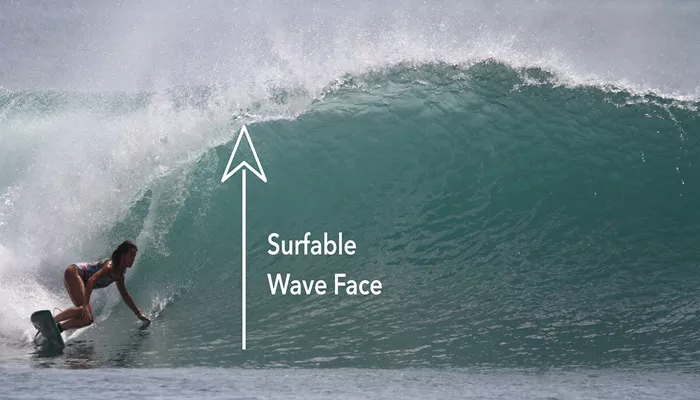Wave height is one of the most critical factors in surfing, affecting both the difficulty level and safety of a surf session. For beginners and even intermediate surfers, large waves pose a significant risk due to their power, speed, and breaking force.
While some experienced surfers seek out towering waves, the threshold of what is considered “dangerous” depends on several factors, including skill level, surf conditions, and environmental hazards.
Factors That Determine Wave Danger Levels
1. Surfer Skill Level
The experience and skill of a surfer play a crucial role in determining what wave height is dangerous. Generally:
Beginners: Waves over 3 feet (1 meter) can be challenging due to their power and unpredictability.
Intermediate surfers: Can handle 4-6 feet (1.2-1.8 meters) with proper technique and understanding of the ocean.
Advanced surfers: May ride waves exceeding 8 feet (2.5 meters), provided they have the experience and fitness to manage wipeouts and hold-downs.
Big wave surfers: Tackle waves 20 feet (6 meters) and above, often requiring specialized training and safety measures like tow-in surfing and rescue teams.
2. Wave Type and Formation
Not all waves are created equal. The danger of a wave is also influenced by how and where it breaks:
Beach Breaks: Often safer due to sandy bottoms, but can still be hazardous in big surf.
Reef Breaks: Can be extremely dangerous at any height due to shallow, jagged coral or rock formations.
Point Breaks: Generally offer smoother, longer rides but can still be treacherous when waves exceed 6-8 feet (1.8-2.5 meters).
3. Wave Power and Period
A 10-foot (3-meter) wave with a long period (e.g., 16+ seconds) carries significantly more energy than a short-period wave of the same height. Long-period waves have greater force, making wipeouts more punishing and increasing the likelihood of hold-downs.
4. Local Conditions
Even moderate-sized waves can become dangerous under certain conditions:
Strong Currents & Rips: Can pull surfers into hazardous areas or make exiting the water difficult.
Cold Water & Weather Conditions: Can lead to hypothermia or reduced physical performance.
Crowded Lineups: Increase collision risks, particularly in bigger surf.
Wave Heights And Their Associated Risks
1-3 Feet (0.3-1 Meter) – Low Risk
- Ideal for beginners
- Manageable wipeouts
- Minimal risk of drowning or serious injury
4-6 Feet (1.2-1.8 Meters) – Moderate Risk
- Suitable for intermediate surfers
- More power in the waves, requiring better paddling and takeoff skills
- Risk of being held underwater briefly
7-10 Feet (2.1-3 Meters) – High Risk
- Strong currents and heavier wipeouts
- Increased risk of hold-downs
- Requires excellent fitness and experience
10-20 Feet (3-6 Meters) – Very High Risk
Potential for two-wave hold-downs (being held underwater by multiple waves)
Heavy boards and leashes can become entanglement hazards
Often requires special training and safety measures
20+ Feet (6+ Meters) – Extreme Risk
- Only for elite big wave surfers with proper safety teams
- High risk of drowning, broken boards, and serious injury
- Requires jet ski assistance for rescue in case of wipeouts
Signs That Waves Are Too Dangerous
Even skilled surfers can misjudge conditions. Some signs that waves may be too dangerous to surf include:
- Double-overhead waves (twice your height) with a long period
- Unfamiliar or highly technical breaks (e.g., shallow reefs)
- Heavy shorebreak waves that slam into shallow water
- Strong onshore winds creating unpredictable wave faces
- Extreme tidal swings affecting wave power and currents
Safety Tips for Surfing Large Waves
If you find yourself in waves larger than your comfort zone, follow these tips:
Assess the Conditions – Check wave height, period, and local hazards before paddling out.
Have the Right Equipment – Larger waves require bigger boards, stronger leashes, and in some cases, impact vests.
Practice Breath-Holding – Being able to hold your breath for extended periods helps in heavy wipeouts.
Use the Buddy System – Surf with a friend or in areas with lifeguards and safety teams.
Know When to Bail – If conditions look too dangerous, it’s okay to sit out a session.
Conclusion
Wave height alone does not determine danger in surfing—factors like wave type, power, and environmental conditions all contribute. While beginners should avoid waves over 3 feet, intermediate surfers can handle up to 6 feet, and advanced surfers may push past 10 feet with caution. True big wave surfing (20+ feet) is reserved for those with specialized training and safety measures. Ultimately, understanding the ocean and respecting its power is the key to safe and enjoyable surfing.

